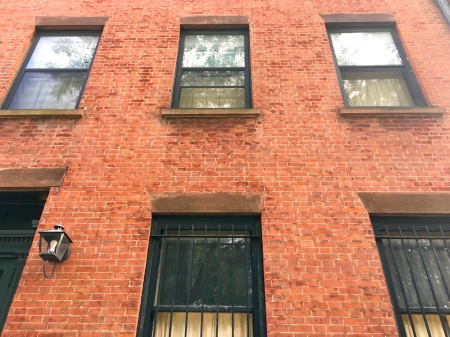 The neighborhood surrounding St. Mark’s Church on Second Avenue and 10th Street owes its charm to the descendants of the Stuyvesant family.
The neighborhood surrounding St. Mark’s Church on Second Avenue and 10th Street owes its charm to the descendants of the Stuyvesant family.
These were the great-great grandsons and granddaughters of Petrus Stuyvesant, the director-general of New Netherland from 1647-1664.
In the late 1700s and early 1800s, these Stuyvesants lived in stately houses on land that was once part of the director-general’s vast estate, which spanned Fifth Street to 17th Street east of Fourth Avenue.
A few of these elegant houses still stand—like the modest, understated Federal-style home at 44 Stuyvesant Street (above).
Not only is it believed to be the oldest house in the East Village, but it’s one of the oldest buildings in Manhattan to continually be used as a residence, and thus was spared excessive remodeling and renovations.
“This early Federal house was erected in 1795 for Nicholas William Stuyvesant on Stuyvesant Street,” according to the Landmarks Historic Commission report on the St. Mark’s Historic District from 1969.
That was the same year Stuyvesant married a member of another old New York family, Catherine Livingston Reade. It stands to reason that the house may have been a family wedding gift for the young society couple.
The stately yet unassuming facade gives the date away, the report states. (Above, the area in the 1840s; Number 44 would be the third house from the corner on Stuyvesant Street.)
“The almost square windows, splayed lintels and bricks laid in Flemish bond are characteristics of that period. The doorway has retained its original proportions, indicating the grand style of the door, which has been replaced.”
Other lovely features include interior hand-hewn beams, a “dog-leg staircase,” and basement wall made of stone blocks, the report states.
Nicholas and Catherine spent 23 years living in this house, and they raised their nine children here. In 181 they decamped to another Stuyvesant family house and rented out Number 44.
“It is impossible to over-emphasize the importance of this building—historically and architecturally,” the HPC report asserts. “It is one of only two remaining houses of the early generations of the Stuyvesant family, and it is that family name, above all others, that represents Dutch New York.”
Another Stuyvesant survivor is down the block at 21 Stuyvesant Street. This pretty home with dormer windows served as a wedding present for a Stuyvesant descendent who married Nicholas Fish (parents of Hamilton Fish) in 1804.
[Fourth Image: Edward Henry Lamson]









